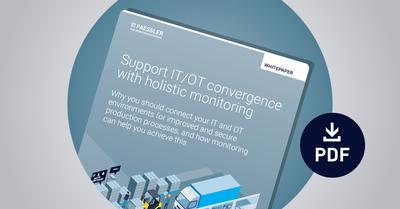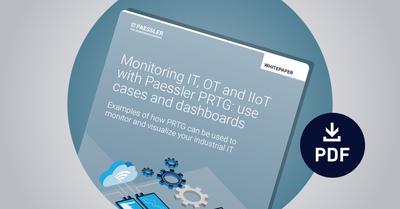A smart city uses information and communication technologies (ICT) to help resolve the traditional challenges of urban living. Smart cities address problems that arise from demographic and climate changes, population growth, inner-city pollution, resource scarcity, and increases in crime.
The term smart city describes the economic, technological, and social trends for the envisaged green cities of the future. Smart cities are an implementation of the IoT (internet of things). Smart cities encompass and are linked to other smart worlds, like smart environments, smart buildings, smart logistics, smart retail, smart transport, and smart health.
Through the interaction of people and the IoT, inhabitants of smart cities are able to utilize intelligent technologies to improve their quality of life.
The main benefits of smart cities include the provision of basic services like water supply, energy supply, and waste management; efficient urban mobility and cost-effective public transport; and affordable housing and better urban planning. Smart city planners use IoT technologies to ensure the sustainability of environmental resources; preservation of recreational areas; effective health and education; mitigation of the effect of natural disasters; and safety and security for citizens.
At the heart of smart cities are people. Smart cities also aim to give residents a voice in the way their cities are run by connecting government agencies, city residents, and businesses.
CCTV, commonly known as video surveillance, is used to monitor and report on almost all aspects of smart cities. For example, CCTV is used to monitor foot and vehicle traffic. Traffic data is used to plan effective road networks and design urban areas to better cater to pedestrians and cyclists.
Video surveillance in urban areas is used to deter potential criminals and to improve security in private homes, for businesses, and on the streets. CCTV improves public safety with capabilities for vehicle tracking, license plate recognition, and facial recognition.
Used in conjunction with CCTV, IoT sensors can detect events that are out of the ordinary such as blocked emergency exits, failed traffic lights, gas leaks, flooded cellars, and smoke.
Smart cities use connected sensors, lights, and meters to collect and analyze data and create connected solutions. A variety of software applications, user interfaces, and communication networks are used to deliver these connected solutions.
Sensors and actuators
Nearly any physical object – from small objects like emergency call buttons to large objects like connected vehicles – can be connected to the internet by adding sensors or actuators. Sensors provide the data that is used in smart applications to automate processes, for example switching on streetlights when it gets dark, and predict events, for example alerting emergency services in a city that a thunderstorm is imminent.
WANs, MANs, and LANs
A smart city is made up of multiple wide area networks (WANs), metropolitan area networks (MANs), and local area networks (LANs).
In a WAN, connected devices usually have a radius of more than half a mile. WANs can cover an entire city and even the whole world. An example of a WAN is the internet. MANs are larger than LANs but smaller than WANs. An example of a MAN is the network that links traffic lights in a metropolitan area. An example of a LAN is the connection between devices in a smart building like a school, office, or hospital.
LPWANs
A low-power wide-area network (LPWAN) is a type of wireless WAN designed to enable low-power communication over long distances between connected objects, for example sensors that use a battery. Using LPWAN technologies, battery-operated devices, like sensors, may operate for up to 10 years without human intervention. Examples of LPWAN technologies include Long Range (LoRa), 5G, and Narrowband Internet of Things (NB-IoT).
Examples of smart city applications that use LPWAN technologies include applications for gas and water metering, energy management, leak and flood detection, fault monitoring, traffic monitoring, air quality monitoring, smart parking, workplace optimization, automated building safety inspection, city security, and waste and resource management.
LoRa and LoRaWANs
LoRaWAN is a media access control (MAC) protocol for WANs that is designed to cost-effectively enable low-powered devices to communicate with IoT devices and applications over long-range wireless connections.
LoRa refers to a wireless modulation that enables communication with very low power consumption. LoRaWAN refers to a network protocol with LoRa chips for communication. LoRa is the physical layer, that is, the chip. LoRaWAN is the MAC layer or the software on a chip that enables networking.
WPANs
WPAN stands for wireless personal area network. WPAN connects devices on a battery over short distances, for example in smart buildings. Bluetooth and ZigBee are examples of WPAN technologies.
VPNs
VPN stands for virtual private network. A VPN ensures that data from different users of city networks is kept private from other users. For example, where hospitals, schools, and private individuals use the same energy infrastructure, VPNs ensure each tenant's data is isolated.
Building a smart city infrastructure, updating software and resources, and hiring skilled people to develop and maintain systems can be costly.
Smart cities require 24/7 connectivity and a reliable power supply.
IT developers of smart city applications need to ensure data security and compliance with national and international data regulations.
Physical sensors, which provide critical data to enable the development and management of smart cities, usually run on batteries (it is estimated there are about one trillion physical sensors globally), which is not always energy efficient in the long term.
In smart cities, citizens may be unaware of the impact of modern technology on their lives and potential threats caused by sharing their personal information.
Unintentional data bias, for example the data from legacy systems, may discriminate against some sectors of a smart city community.
According to Paessler AG, while big data and CCTV can effectively support urban planning, collecting data is not enough; the flood of big data must be evaluated appropriately and in a useful way. The term appropriate refers to monitoring that complies with data protection regulations, for example the General Data Protection Regulation (GDPR).
Get your free white papers
White paper I
In modern industrial IT, the right teams need the right data. Our guide shows how to implement holistic monitoring that brings elements from IT, OT and IIoT into your dashboards.
White paper II
Our second guide gives you inspiration and ideas for dashboards that feature IT, OT and IIoT data – all in one place. We show you what truly convergent industrial dashboards look like!
- https://cis.ieee.org/technical-committees/smart-world-technical-committee
- https://en.wikipedia.org/wiki/Ubiquitous_computing
- https://www.darwinrecruitment.com/blog/2018/10/ubiquitous-computing-examples
- https://ai.stackexchange.com/questions/7446/what-is-the-difference-between-artificial-intelligence-and-computational-intelli
- https://www.cnbctv18.com/views/a-future-smart-world-a-look-at-the-ways-technology-will-disrupt-our-lives-4042611.htm
- https://content.iospress.com/articles/journal-of-ambient-intelligence-and-smart-environments/ais180509
- https://www.intechopen.com/books/internet-of-things-technology-applications-and-standardization/the-internet-of-things-in-a-smart-connected-world
- https://builtin.com/internet-things/iot-examples
- https://www.merriam-webster.com/dictionary/ubiquitous
- https://easternpeak.com/blog/6-cool-examples-of-internet-of-things-applications-and-how-to-develop-one/
- https://simplicable.com/new/iot-vs-embedded-systems
- https://stackoverflow.com/questions/11425729/what-is-an-embedded-system-can-mobile-be-considered-as-an-embedded-product
- https://shiverware.com/iot/iot-vs-wsn.html#:~:text=In%20an%20IoT%20system%2C%20all,of%20a%20body%20of%20water.&text=Conversely
%2C%20in%20a%20WSN%2C%20there,of%20router%20or%20central%20node. - https://www.news24.com/wheels/news/gear_and_tech/fighting-the-perils-of-pedal-power-how-volvo-keeps-cyclists-safe-on-the-roads-20210317-2
- https://behrtech.com/blog/6-leading-types-of-iot-wireless-tech-and-their-best-use-cases/
- https://www.avsystem.com/blog/iot-technology/
- https://www.g2.com/categories/iot-operating-systems
- https://www.postscapes.com/internet-of-things-protocols/
- https://iot-analytics.com/40-emerging-iot-technologies-you-should-have-on-your-radar/
- https://www.iot-now.com/2020/06/03/103228-5-challenges-still-facing-the-internet-of-things/
- https://channels.theinnovationenterprise.com/articles/how-the-internet-of-things-will-revolutionize-the-logistics-industry#:~:text=In%20the%20logistics%20domain%2C%20IoT,vehicle%20location%2C%20and%20delivery%
20status.&text=Such%20a%20solution%20is%20an,compilation%20and%20viewing%20of%20schedules. - https://www.i-scoop.eu/internet-of-things-guide/industrial-internet-things-iiot-saving-costs-innovation/
- https://www.bbvaopenmind.com/en/technology/digital-world/3-major-challenges-facing-iot/
- https://www.paessler.com/iot
- https://blog.paessler.com/whats-lora-again
- https://blog.paessler.com/what-is-lora-a-beginners-guide-part-1
- https://blog.paessler.com/all-lpwan-players-in-one-short-overview
- https://blog.paessler.com/big-data-city-urban-life-in-the-21st-century

